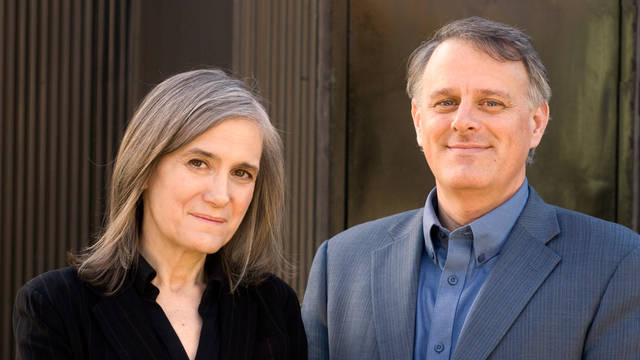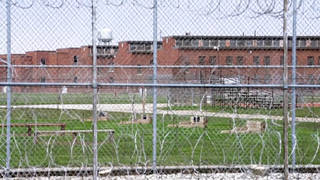
By Amy Goodman and Denis Moynihan
Stay at home. Shelter in place. Maintain social distance. We now know how to slow the COVID-19 pandemic. Containment of the novel coronavirus requires that we act together, as a global community. But not everyone has the freedom to take these steps. The United States is the greatest jailer in the world, with over 2.3 million people in detention. In this sprawling, fragmented gulag, the coronavirus runs rampant, rips through jailed populations and crosses prison walls with every shift change, when the guards and staff enter and leave.
New York City has become the epicenter of the pandemic in the United States, and Rikers Island, New York’s notorious jail, is a cauldron of infection. Both prisoners and staffers describe a filthy, unsanitary jail with limited cleaning supplies, virtually no PPE (personal protective equipment) and cramped spaces with no way to maintain safe distance from others. The one ward equipped to handle infectious diseases is full. Recent reports indicate 180 prisoners,114 guards, and 23 healthcare workers have tested positive for COVID-19. The actual number is undoubtedly far higher, due to the egregious lack of testing almost everywhere in the United States.
Dr. Ross MacDonald, the top doctor at Rikers Island, called the situation there a “public health disaster unfolding before our eyes.”
New York City Mayor Bill DiBlasio has ordered a limited release of prisoners from Rikers, some over the age of 70 and some with pre-existing conditions, two groups for whom COVID-19 is especially lethal. That still leaves close to 5,000 people in NYC’s jail system, primarily on Rikers. New York’s Legal Aid Society compiled COVID-19 infection rates in NYC jails, with stark findings. They calculated an infection rate of 3.91% — eight times higher than New York City, and more than nine times higher than the hard-hit Lombardy region in Italy. “Stop sending people to Rikers and let these New Yorkers out immediately. Anything else is too little, too late,” Tina Luong, the lead attorney in Legal Aid’s Criminal Defense Practice, said in a statement.
There is one way that Rikers prisoners can access protective gear, however; The Intercept has reported that they’re being offered $6 per hour along with PPE if they agree to dig mass graves at New York City’s public cemetery on Hart Island.
“The story of Rikers is a story of all 5,000 jails and prisons and ICE detention centers around the country. The top priority is release. We must get people out of these places, particularly those with health risks for serious injury and death,” Dr. Homer Venters, former chief medical officer for New York City’s Correctional Health Services, said on the Democracy Now! news hour last week. “We have to make sure that the people who are still behind bars have access today to hospital-level care when they become sick. We have to avoid the temptation to use lockdown as a public health intervention. It’s not.” But a lockdown is precisely what the federal Bureau of Prisons imposed on April 1st, confining all 176,000 federal prisoners to their cells for at least two weeks.
Then there is the immigration detention system. ICE — Immigration and Customs Enforcement — detains over 39,000 people. On Monday, the Congressional Hispanic Caucus added their voice to over 3,000 medical professionals and many immigrant rights groups, calling on ICE to release the vast majority of detainees.
“Immigration detention centers really are vulnerable to the outbreak of a contagious disease,”
John Sandweg, former acting director of ICE in the Obama administration, said recently Democracy Now! “It’s really impossible to engage in the social distancing that we’re all practicing right now…let’s go ahead and downsize the population of the detention centers dramatically, release these individuals.” ICE itself, without President Donald Trump’s approval or any court order, has the unilateral authority to release its prisoners.
The Prison Policy Initiative (PPI), in a comprehensive report released last week, lists the complex web of incarceration now holding 2.3 million people in the United States: “1,833 state prisons, 110 federal prisons, 1,772 juvenile correctional facilities, 3,134 local jails, 218 immigration detention facilities, 80 Indian Country jails, military prisons, civil commitment centers, state psychiatric hospitals, and prisons in U.S. territories.” They report that 75% of people locked up in local jails, including Rikers, are not convicted of any crime but are simply jailed awaiting trial because they can’t afford bail. PPI also reports that 200,000 enter the system weekly, and as many leave.
Flattening the curve of the COVID-19 pandemic will only happen through massive collective action. President Donald Trump, all 50 state governors, and local authorities need to release as many of their prisoners as possible, quickly. That will take public pressure from us all.











Media Options